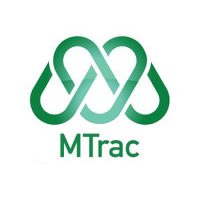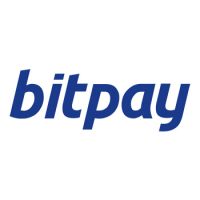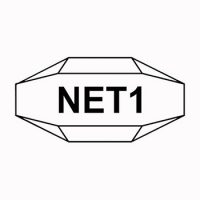Blockchain
Pharmaceutical Sterility Testing Market Worth $3,389.3 Million by 2030: Grand View Research, Inc.

The global pharmaceutical sterility testing market size is expected to reach USD 3,389.3 million by 2030, registering a CAGR of 11.5% during the forecast period, according to a new report by Grand View Research, Inc. Actively growing investment in pharmaceutical R&D, increasing demand for the new therapies, and a rise in the number of drug and medical device approvals in recent years are some of the major factors driving the market’s growth.
Key industry Insights & Findings from the report:
- Outsourcing segment emerged as the largest segment in 2021, as pharmaceutical and medical device companies are trying to focus on their core competencies such as research and marketing, owing to which they outsource sterility testing service.
- The bacterial endotoxin testing segment is expected to account for the largest share with 39.4% in 2021. The growing demand for implants and sterile medicines is supporting the growth of the segment market.
- The biologics and therapeutics segment by the sample is expected to grow at the fastest rate of 11.7% CAGR throughout the forecast period as we anticipate rising clinical trials for the biologics and biosimilar, globally, for the treatment of cancer, autoimmune diseases, infectious diseases, and others.
- Based on end use, the pharmaceutical companies accounted for the largest share of 42.9% in 2021; owing to the current high spending on medicines, globally.
- In Asia Pacific, the market is expected to encounter the highest CAGR during the forecast period, owing to the significant number of initiatives taken by the public organization in the region to boost pharmaceutical manufacturing and R&D. This contributes to the demand for sterility testing of the pharmaceuticals in Asia Pacific.
Read 100-page full market research report for more Insights, “Pharmaceutical Sterility Testing Market Size, Share & Trends Analysis Report By Type (In-house, Outsourcing), By Product Type, By Test Type, By End-use, By Sample, By Region, And Segment Forecasts, 2022 – 2030“, published by Grand View Research.
Pharmaceutical Sterility Testing Market Growth & Trends
During the initial period of COVID-19, the majority of the clinical research conducted was related to COVID-19 therapeutics with an aim to eradicate the issue at hand. However, this trend has witnessed a transition post-2021. For instance, Pharma R&D Review January 2022 stated that the majority of therapeutics pertaining to the oncology area was in the late-stage clinical pipeline, which indicates a rise in demand for the sterility testing of these anti-cancer drugs, thus supporting the market’s growth.
There is a growing focus to improve the quality and sterility of drugs. Stringent regulations regarding the quality and sterility of the products are improving the demand for sterility testing of pharmaceutical and medical devices. Moreover, in recent years, a significant number of recalls have been witnessed on the FDA and EMA websites due to the lack of drug sterility. For instance, in July 2021, Innoveix Pharmaceuticals, Inc. voluntarily recalled their injectable AOD-9604 3mg due to lack of sterility.
Recalls not only cause heavy losses but also affect the brand image of the company. Contracting organizations have seized this opportunity to help gain more clientele, which in turn has increased the revenue for sterility testing of the pharmaceuticals and medical devices in the market.
The governments are actively trying to improve R&D by providing tax deductions. For instance, the Indian government in January 2022, stated that it is providing a weighted average tax deduction upto 200% in R&DSuch initiatives are expected to improve the R&D activities on drugs and thus showcase the growing investment within the sector.
Global expenditure on medicines is also on the rise. According to the data provided in a report published by IQVIA, one can conclude that global spending on medicines is expected to increase in the next 4-5 years. The report states that global payments on medicine accounted for USD 955.0 billion in 2019 and will reach USD 1,115.0–1,145.0 billion by 2024. The rise in pharmaceutical spending is expected to increase the development of the medication, which in turn grows demand for pharmaceutical sterility testing in the post-pandemic period.
Pharmaceutical Sterility Testing Market Segmentation
Grand View Research has segmented the global pharmaceutical sterility testing market based on the type, product type, test type, sample, end-use, and region
Pharmaceutical Sterility Testing Market – Type Outlook (Revenue, USD Million, 2018 – 2030)
- In-house
- Outsourcing
Pharmaceutical Sterility Testing Market – Product Type Outlook (Revenue, USD Million, 2018 – 2030)
- Kits and Reagents
- Instruments
- Service
Pharmaceutical Sterility Testing Market – Test Type Outlook (Revenue, USD Million, 2018 – 2030)
- Sterility Testing
- Membrane Filtration
- Direct Inoculation
- Bioburden Testing
- Bacterial Endotoxin Testing
- Container closure integrity testing
- Antimicrobial effectiveness testing
- Rapid micro test
- ATP bioluminescence
- Fluorescent labeling
- Electrical resistance
- Others
Pharmaceutical Sterility Testing Market – Sample Outlook (Revenue, USD Million, 2018 – 2030)
- Pharmaceuticals
- Medical Devices
- Biopharmaceuticals
Pharmaceutical Sterility Testing Market – End-Use Outlook (Revenue, USD Million, 2018 – 2030)
- Compounding Pharmacies
- Medical Devices Companies
- Pharmaceutical Companies
- Others
Pharmaceutical Sterility Testing Market – Regional Outlook (Revenue, USD Million, 2018 – 2030)
- North America
- U.S.
- Canada
- Europe
- U.K.
- Germany
- France
- Italy
- Spain
- Netherlands
- Belgium
- Sweden
- Switzerland
- Russia
- Asia Pacific
- China
- India
- Japan
- Australia
- South Korea
- Philippines
- Malaysia
- New Zealand
- Singapore
- Thailand
- Latin America
- Brazil
- Mexico
- Argentina
- Colombia
- Chile
- Middle East & Africa
- South Africa
- Saudi Arabia
- Egypt
- Israel
- UAE
List of Key Players in Pharmaceutical Sterility Testing Market
- Pacific Bio labs
- STERIS
- Boston Analytical
- Nelson Laboratories, LLC
- Sartorius AG
- SOLVIAS AG
- SGS SA
- Laboratory Corporation of America Holding
- Pace Analytical
- Charles River Laboratories
- Thermo Fisher Scientific, Inc.
- Rapid Micro Bio systems, Inc.
- Thermo fisher Scientific Inc
- Almac Group
Check out more related studies published by Grand View Research:
- U.S. Pharmaceutical Sterility Testing Market – The U.S. pharmaceutical sterility testing market size is expected to reach USD 713.6 million by 2025, according to a new report by Grand View Research, Inc. It is anticipated to expand at a CAGR of 11.3% over the forecast period. Supportive government investment in healthcare industry, increasing R&D activities, and drug launches are the key factors driving market growth.
- Central Lab Market – The global central lab market size is expected to reach USD 5.08 billion by 2030, according to a new report by Grand View Research, Inc. It is estimated to register a CAGR of 6.7% during the forecast period, driven by the increasing investment in R&D and increased focus of sponsors & investigators on reducing research costs. The outsourcing of central lab work is a significant factor driving the market growth.
- Laboratory Proficiency Testing Market – The global laboratory proficiency testing market size is expected to reach USD 1.9 billion by 2027, according to a new report by Grand View Research, Inc. It is expected to expand at a CAGR of 7.3% from 2020 to 2027. The market is driven by the increasing focus on water tests, legalization of medical cannabis, a growing number of cannabis testing laboratories, and increasing outbreaks of foodborne illnesses.
Blockchain
Halving weakness sees $206 million exit crypto funds, Bitcoin miners pivot to AI

Leading up to Friday’s Bitcoin (BTC) halving, investors opted to remain on the sidelines rather than increase their exposure to cryptocurrencies. CoinShares’ latest report on digital asset fund flows reveals that crypto funds experienced $206 million in outflows last week, while trading volumes for Exchange-Traded Products (ETPs) dropped to $18 billion.
James Butterfill, head of research at CoinShares, noted, “These volumes represent a lower percentage of total Bitcoin volumes (which continue to rise) at 28%, compared to 55% a month ago.” He attributed this decline in investor appetite to expectations that the Federal Reserve would maintain interest rates at elevated levels for a longer duration.
In terms of regional flows, the United States led the outflows with $244 million exiting incumbent ETFs by the week ending April 19. Butterfill highlighted that newly issued ETFs still received inflows, albeit at lower levels compared to previous weeks. Germany and Sweden saw outflows of $8.3 million and $6.7 million, respectively, while Canada experienced inflows of $29.9 million. Switzerland, Brazil, and Australia also witnessed inflows of $7.8 million, $5.5 million, and $2.2 million, respectively.
Butterfill observed that although Bitcoin saw outflows of $192 million, there were minimal flows into short-Bitcoin positions. Ethereum (ETH) experienced outflows of $34 million for the sixth consecutive week. However, multi-asset funds saw improved sentiment, attracting $8.6 million in inflows. Additionally, Litecoin (LTC) and Chainlink (LINK) received inflows of $3.2 million and $1.7 million, respectively.
The report highlighted that blockchain equities sustained their 11th consecutive week of outflows, totaling $9 million, as investors remained concerned about the halving’s impact on mining companies.
In a separate analysis of the post-halving crypto mining industry, CoinShares analysts suggested that many miners might transition to serving the artificial intelligence (AI) sector, which has become more lucrative. They anticipated a shift towards AI in energy-secure locations, potentially leading to Bitcoin mining operations relocating to stranded energy sites.
The analysts projected a 10% decline in the Bitcoin network’s hash rate after the halving as miners deactivate unprofitable ASICs. However, they expected the hash rate to reach 700 exahash (EH/s) by 2025. As of the current data, the Bitcoin hash rate stands at 596.22 EH/s.
The report also noted that substantial cost increases are anticipated due to the halving, with electricity and production costs nearly doubling. Mitigation strategies include optimizing energy costs, enhancing mining efficiency, and securing favorable hardware procurement terms. Miners are actively managing financial liabilities, with some utilizing excess cash to significantly reduce debt.
Source: kitco.com
The post Halving weakness sees $206 million exit crypto funds, Bitcoin miners pivot to AI appeared first on HIPTHER Alerts.
Blockchain
NYSE gauges interest in 24/7 stock trading like crypto

According to reports, the New York Stock Exchange (NYSE) is exploring the possibility of introducing round-the-clock trading, a model akin to that of cryptocurrency markets. In a bid to gauge market sentiment, NYSE’s data analytics team has circulated a survey among market participants. The survey seeks feedback on whether there is support for 24/7 or extended weekday trading hours and, if so, what measures should be implemented to safeguard traders against overnight price fluctuations. As of now, NYSE, alongside Nasdaq and the Chicago Board Options Exchange, operates from Monday to Friday, spanning from 9:30 am to 4:00 pm Eastern Time.
In the United States, assets like cryptocurrencies, United States Treasurys, foreign exchange, and major stock index futures are already tradable 24/7. Certain brokerages, such as Robinhood and Interactive Brokers, provide access to U.S. stocks throughout the week via a “dark pool” trading venue, catering to international retail investors during their local trading hours.
However, recent reports indicated that Robinhood suspended its 24-hour trading services amidst heightened tensions between Israel and Iran, prompting concerns among investors regarding the sustainability of continuous trading.
Effectively managing liquidity in a 24/7 trading environment has proven challenging for trading platforms within the cryptocurrency industry.
According to cryptocurrency research firm Kaiko, there’s often a mismatch between the operating hours of traditional financial institutions and the needs of major crypto traders and market makers. Traders frequently find themselves losing sleep during periods of extreme market volatility.
While the results of NYSE’s survey haven’t been revealed, Tom Hearden, a senior trader at Skylands Capital, conducted his own poll among his 19,300 followers, asking if they would support NYSE transitioning to 24/7 trading hours. Interestingly, over 70% of the 1,459 respondents voted “No.”
NYSE’s survey coincides with the efforts of startup firm 24X National Exchange, which is seeking approval from the Securities and Exchange Commission (SEC) to launch the first exchange in the country operating round-the-clock.
The FT said, citing two persons familiar with the subject, that the SEC has “months” to study the proposed rule change, and other relevant issues, such who should shoulder expenses and the function of clearing houses, are already being considered by other stakeholders.
“How loud they will be playing in the middle of the night is unknown to me. However, the decision of whether something is commercially feasible or not actually shouldn’t be made by the SEC, James Angel, a Georgetown University finance professor, told FT.
“I support letting the market make the decision. We’re all better off if it succeeds, and the exchange’s stockholders lose out if it fails.
After the company withdrew an application in March 2023, alleging operational and technological concerns, it is the second attempt to receive SEC clearance.
Source: cointelegraph.com
The post NYSE gauges interest in 24/7 stock trading like crypto appeared first on HIPTHER Alerts.
Blockchain
Online Banking Market to Grow at CAGR of 14.20% through 2033, Key Takeaways of Digital Banking, Banking Ecosystem, Financial Giants & Disruptive Startups
-

 Blockchain Press Releases5 days ago
Blockchain Press Releases5 days agoCanaan Shines at Blockchain Life 2024 in Dubai
-

 Blockchain5 days ago
Blockchain5 days agoPhoenix Group Engages BHM Capital as Liquidity Provider to Boost ADX Liquidity and Enhance Market Dynamics
-

 Blockchain5 days ago
Blockchain5 days agoQuantum eMotion Files a Patent for Quantum-based Blockchain Wallet Under the Patent Cooperation Treaty (PCT)
-

 Blockchain Press Releases6 days ago
Blockchain Press Releases6 days agoBybit Institutional Report 2024: Institutions Become Bullish and Eye Challenger Chains, while VC Funding Resurges for Infrastructure, Gaming, and AI
-

 Blockchain5 days ago
Blockchain5 days agoElizabeth Warren Urges Treasury Secretary Yellen to Implement Strong AML/CFT Measures for Stablecoins
-

 Blockchain Press Releases7 days ago
Blockchain Press Releases7 days agoBybit and Franck Muller Partner with Sidus Heroes to Launch Cosmic Gears: A Pioneering Web3 Game with a $250,000 Prize Pool and Exclusive Watch Collection
-

 Blockchain5 days ago
Blockchain5 days agoCrypto fans count down to bitcoin’s ‘halving’
-

 Blockchain5 days ago
Blockchain5 days agoTether USDT stablecoin goes live on TON blockchain











































